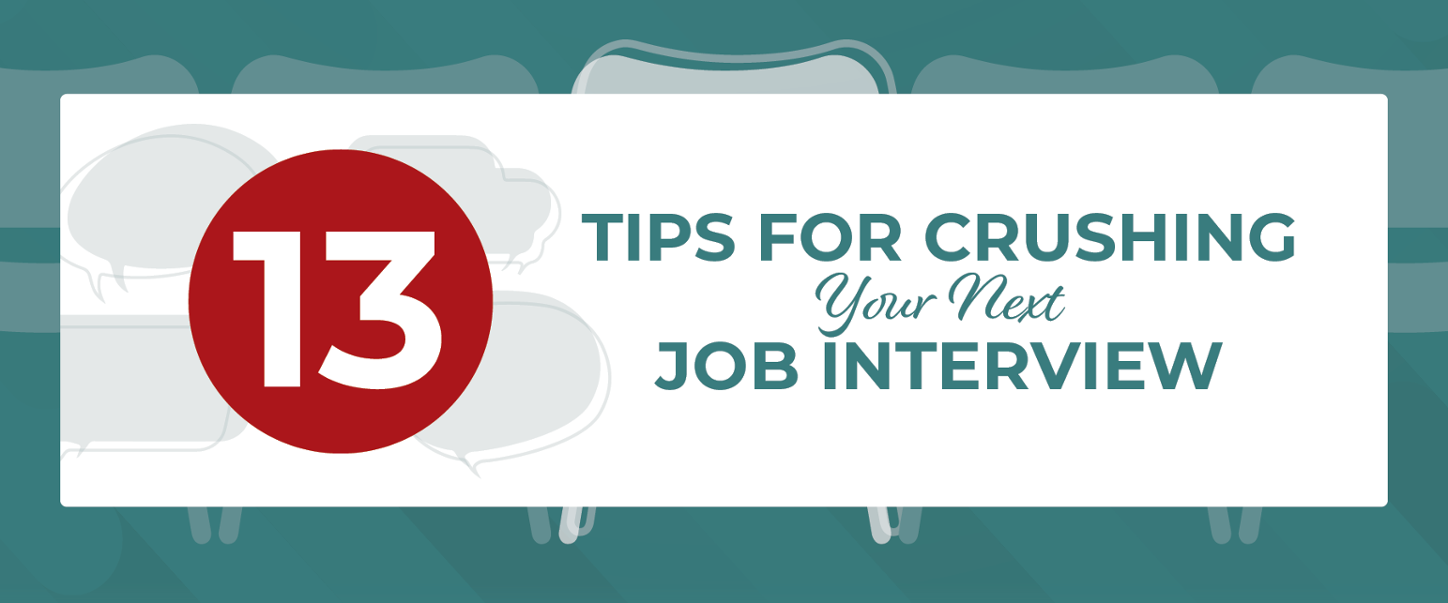 As you begin your job search, it’s time to dust off your resume — or create a new one — and make sure it’s up-to-date. Whether you’re new to the resume thing or haven’t looked at yours in years, it’s vital you get it right.
As you begin your job search, it’s time to dust off your resume — or create a new one — and make sure it’s up-to-date. Whether you’re new to the resume thing or haven’t looked at yours in years, it’s vital you get it right.
After all, your resume is the most important document you’ll submit in your search for your dream career. It’s your first opportunity to present yourself to a potential employer — and you don’t have long to make a mark.
According to Indeed, hiring managers and recruiters look at resumes for an average of only six to seven seconds. So how can you ensure they see everything that matters in such a short window of time?
We’ve been reviewing resumes here at Anderson Trucking Service (ATS) for nearly 70 years. So we know what to include on your resume to make sure you’re the candidate that gets the call to set up an interview instead of finding your resume in the “special filing cabinet” (that’s the garbage can for those of you that don’t watch “The Office”).
By the way, we don’t actually throw resumes away. They get filed appropriately whether or not you’re brought in for an interview.
Keep reading to learn eight key components to include on your resume so you can land your dream job.
What Should be on My Resume?
The key to a great resume is not including too much — and not too little either. So, like the classic story of “Goldilocks and the Three Bears,” these eight pieces are key to making your resume just right:
- Make it easy to identify your qualifications
- Place your work history in a logical order
- Choose 3-4 former positions/experiences that best fit the position you apply for
- Quantify your successes with numbers
- Use strong action words
- Use appropriate keywords in your resume
- Only share relevant social profiles
- Proofread!
1. Make it Easy to Identify Your Qualifications
Remember, hiring managers and recruiters don’t look at resumes for very long, so you’ve got to make sure the important qualifications stand out and can be found easily — even if they’re skimming.
You can do that by creating a “skills” section on your resume, using bold font for key skills, using bullet points or using color to call out important sections — or, likely, a combination of all of the above.
It’s important to break things up into “bite-size” pieces instead of long walls of text. Not only will large chunks of text make things harder to read, but they might also prevent someone from reading the copy in the first place because it looks so daunting.
Related: Top 10 Highly-Transferable Job Skills Employers Look For
2. Place Your Work History in a Logical Order
What section comes first can be up for debate, depending on the type of position you apply for. For example, in an entry-level position, your education might carry more weight than the part-time job you held through college. However, if you apply for a more senior-level role, your recent work history means much more than the degree you earned years or decades ago.
That said, what’s not up for debate is how you should format your work history section. You’d be hard-pressed to find a hiring manager or recruiter that doesn’t want to see your most recent work history first, followed chronologically by your previous work experience.
What you’ve done recently means much more than what you did years ago — especially since you’ve probably forgotten many of the things you did way back then, depending on how long you’ve been in the workforce.
The skills and job functions you did at your most recent employer will be the freshest in your mind, so they’ll likely be the most seamless for you to utilize in the role you apply for.
3. Pick 3-4 Positions/Experiences That Best Fit the Position You Apply For
It’s important to find a good balance here. In most cases, your high school job isn’t relevant to the career you’re applying for, so it’s okay to exclude that from your resume — unless your high school job is your most recent work experience.
In that case, you’d probably want to lean more heavily into professional experiences — like internships or apprenticeships — instead of work experience.
On the other end of the spectrum, if you’ve been working professionally for a while and have held numerous positions, pick your most recent — and relevant — three or four.

4. Quantify Your Successes With Numbers
Beyond simply listing your previous work experience, it’s important to include some details on what you did in those positions. Highlight the skills you gained and the things you accomplished.
When highlighting the things you accomplished, use things that can be quantified with tangible numbers. What does that mean?
Let’s say you’re applying for a sales position. Mention that you beat your sales targets for four consecutive quarters by 10 percent (if that’s actually true of course). Or mention that you brought in "X" number of new clients over the course of your time at your previous employer.
Those types of things will have more “punch” than simply saying you “thrived in a fast-paced environment.”
5. Use Strong Action Words
Speaking of “punch,” beyond listing tangible numbers, make sure to include verbs (or action words) that pack a punch. Works like “achieved,” “improved” and “established” can make you come across as a stronger candidate.
Let’s pair points four and five together. Use bullet points like:
- “Exceeded sales targets in four straight quarters by 10 percent or more”
- “Acquired X new customers during my time with Company X”
Also, try to mix up the words you use so you’re not constantly repeating the same things. The next tip can also help you determine which words make sense to use (hint: it has to do with what words are used in the job description).
6. Use Appropriate Keywords in Your Resume
This can be extremely important, especially if you’re applying for a larger employer. That’s because, typically, the larger the employer, the more candidates they get. In many cases, large companies field more candidates than any human can handle.
So those employers rely on applicant tracking systems to filter out resumes of unqualified candidates so recruiters don’t have an overwhelming number to go through.
Those automated systems are good about ensuring truly qualified candidates get through to recruiters, but you’ll increase your chances of being seen by a human if you include keywords in your resume.
Try to align the words and phrases you use with the words and phrases in the job description. After all, those are the skills the employer finds valuable, so if you have them, share them exactly as you see them.
7. Only Share Relevant Social Media Profiles
While they are social media profiles, not everybody needs to see them — especially not a potential employer. So, if you’re going to share links to any of your profiles, only share ones that are used professionally.
For most people, that would be their LinkedIn profile, but that could vary based on what profession you’re interested in — like an Instagram profile for a photography-related position.
Beyond sharing your professional profiles — and making sure they’re actually looking professional — make sure to set your other profiles to private. In other words, make sure the information within each profile can only be seen by your friends/connections/followers. Anyone viewing it publicly should only be able to see a limited amount of information.
And, once again, don’t list the non-professional profiles on your resume. There’s no use in doing so.

8. Proofread Your Resume!
This may be last on the list, but it’s definitely the most important. Nothing will turn a potential employer away from you like spelling and grammar mistakes. After all, if you don’t take the time to check your work on something as important as your resume, what will you do if they hire you? Will they be correcting your mistakes all the time?
This is even more important if you’re interested in a career that has anything to do with writing or editing.
It’s also important to have someone else look over your resume too — more than one person is even better! You spend hours, likely, creating your resume, so you’d be shocked by how many little things you miss simply because you’ve been staring at it for so long. Fresh eyes can make a huge difference. There’s a reason professional authors have editors!
What Should I Put on My Resume?
The key to creating a great resume is finding the balance between sharing the right information without sharing too much information. The best way to succeed in doing that is by doing the following eight things:
- Make it easy to identify your qualifications
- Place your work history in a logical order
- Choose 3-4 former positions/experiences that best fit the position you apply for
- Quantify your successes with numbers
- Use strong action words
- Use appropriate keywords in your resume
- Only share relevant social profiles
- Proofread!
Your resume is the most important document you’ll create in your job search, so it’s important to get it right. Getting it right also means you have to get your point across in as little as six seconds — the amount of time a hiring manager or recruiter will spend looking at it.
By following the eight tips above, you’ll increase your chances of landing an interview with your dream employer for your dream job.
How to Crush Your Interview
Now that you’ve landed the interview — thanks to those eight tips, we’re sure 🙂 — you’ve got to make sure you ace it. Guess what? We’ve got a tool to help you do just that!
Download our “Interview Etiquette Guide” to get:
- Crucial tips to employ before, during and after your interview
- Clear next steps toward starting the career of your dreams
This guide will help you put your best foot forward so you can land your dream job!




